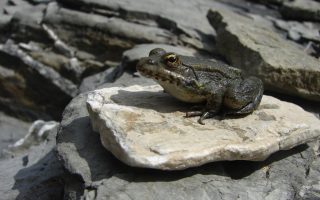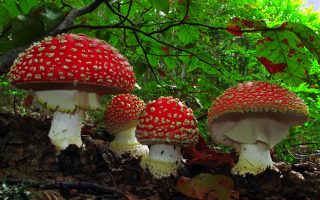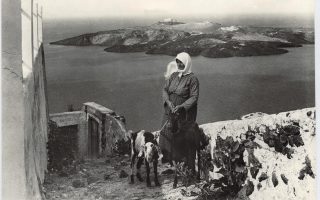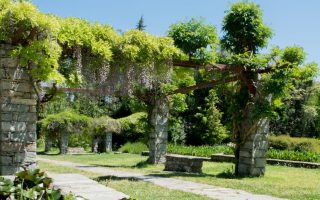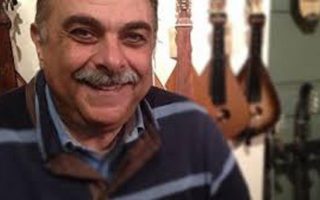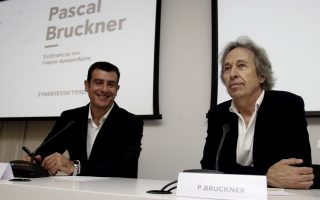Discovery of ancient warrior’s grave hides bonds of friendship
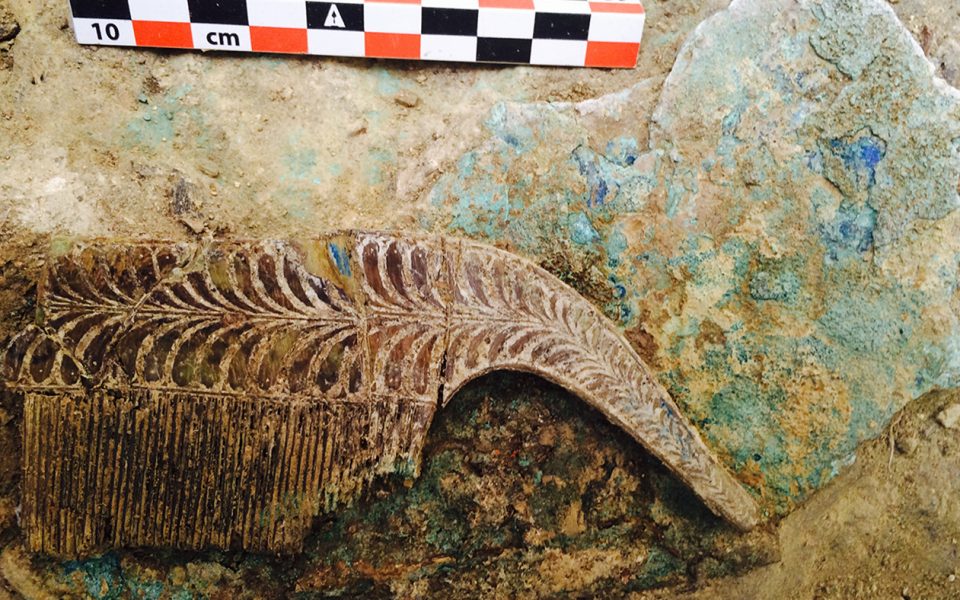
In late May, 10 days after breaking ground, American archaeologist Sharon Stocker received an unexpected message on her cell phone: “We've struck bronze.” Members of her research team at Ano Egliano in Hora, Messinia, in the southwest Peloponnese, had just discovered a bronze object in an unplundered beehive tomb. It was the first sign that something spectacular lay beneath the olive groves.
Months of excavations followed. They were conducted in great secrecy, with 24-hour security to keep away prying eyes and possible looters, until the discoveries were revealed to the world in late October: a bronze sword with an ivory handle covered in gold, solid gold seal rings and other ornate seals, a mirror and a gold chain were but some of the objects placed in the grave of a warrior in 1500 BC.
According to the scientists, this is one of the most impressive prehistoric funerary monuments to have been found on mainland Greece in the past 65 years.
“It is unique,” says Stocker, as she removes three sheets of tarpaulin protecting the site from the elements to reveal a narrow grave.
“When I first saw it, I couldn't have imagined that I'd spend five months in there,” says conservator Alex Zokos, one of the key members of the large team that worked on the excavation. “It was tiring because you had to sit in a confined space and work with fragile materials.”

Sharon Stocker with researchers at the grave. (Photo: Department of Classics, University of Cincinnati/Ministry of Culture)
The rich finds could form the basis of a different interpretation of the past. Until recently, archaeologists would uncover graves containing numerous bodies and scientists would separate the objects found within between the men and the women in the grave. The warrior's tomb, which contained the remains of just one individual, allows the experts to attribute all of the objects to him, even those that may be considered feminine.
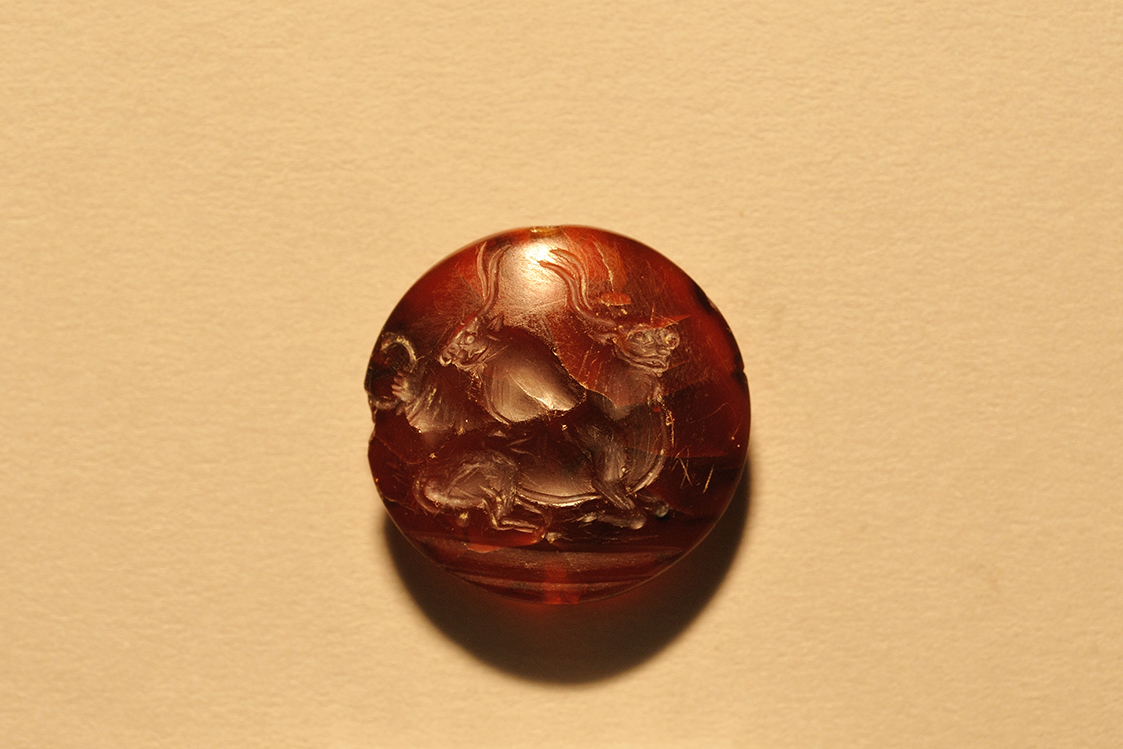
One of the seal stones with intricate Minoan designs found in the tomb. These were among the most exciting discoveries. (Photo: Department of Classics, University of Cincinnati/Ministry of Culture)
Stocker and her husband Jack Davis, a professor of archaeology at the University of Cincinnati and a member of the Institutional Council of the National and Kapodistrian University of Athens, are in charge of the archaeological team from the University of Cincinnati that is investigating the area, together with Greek conservators and archaeologists. The project is run by the American School of Classical Studies in Athens (of which Davis was director from 2007 to 2012) under the supervision of the Ephorate of Antiquities of Messinia.
“We are privileged that the community has embraced us and makes our work easier,” says Stocker. “Without its support we would not have made it.”
Video: Sharon Stocker talks about the discovery
Capital controls imposed in the summer created difficulties in paying the expenses of the individual members of the team on time, but local businesses gave them credit. The bond of trust dates back to deep friendships strengthened through the generations, forged when the grandfathers of the area's residents had worked with American archaeologists on the same land decades ago.
The digs of the 1950s
The warrior's grave is located on an expanse strewn with olives and antiquities. It is 3 kilometers from the small town of Hora and just meters from the Palace of Nestor, first uncovered in 1939 and excavated in 1953 by Carl Blegen (1887-1971), a professor of archaeology at the University of Cincinnati who dedicated a big chunk of his life to excavations in the broader region before and after World War II.

Carl Blegen dedicated much of his life to excavations in Messinia. (Photo: Department of Classics, University of Cincinnati)
The community had allowed Blegen to use an old schoolhouse where, together with his wife, Elizabeth Denny Pierce, he would invite locals for afternoon tea and regale youngsters with tales of ancient Greece from Homer's epics.
In addition to being a font of knowledge, the American archaeologist was also an important employer for the area's jobless young men in the tough postwar years.

One of the excavation teams, with Blegen standing fifth from the left in the second row. (Photo: Department of Classics, University of Cincinnati)
“The locals wouldn't say ‘We're going to the digs’ but ‘We're going to the works,’” remembers 78-year-old Harikleia Androutsaki. We're sitting in the small living room of her home as she offers us kourabies biscuits and kumquat liqueur. It was in this same house, just a few dozen meters from the Archaeological Museum of Hora, that she would host the archaeological missions almost every summer during that exciting period.
Her husband Dionysis (or Nionios as he was known in the village) was just a child and fatherless when he first got to know Blegen, after giving the American some ancient artifacts he found in a family field. The locals would usually destroy such discoveries in the hope that they contained gold. Blegen was impressed by the boy's initiative and offered him a job. Androutsakis started by taking water to the workers on a donkey, later becoming a site foreman and later still guiding dignitaries from foreign countries around the archaeological site.
“He became Blegen's right hand and Blegen in turned loved him dearly. In his letters he would call him son,” reminisces Androutsakis's widow. “And Nionios saw him as his father too.”

A letter dated 1968 from Carl Blegen to Dionysis Androutsakis. (Photo: Karolina Androutsaki Archive)
Blegen also defended Androutsakis when the local authorities accused the latter of hiring communist workers during the civil war.
The Greek couple returned the love, naming their daughter Karolina after the American archaeologist. She in turn carried on the family tradition and worked in the Ephorate of Underwater Antiquities.
‘Friends of Greece’
Jack Davis was still a student when he met Harikleia and Dionysis Androutsakis for the first time in the autumn of 1975. “They opened their home to us,” he remembers. “I will never forget their hospitality.”
When he returned to the area in the early 1990s to start his own research he remembers the locals, and especially the teachers, giving him a warm welcome. And there were definitely periods when the team needed their support. In the early years when the researchers could not afford to rent accommodation, the people of Hora put them up in a room at the local school and hired a cook to prepare their meals. It worked both ways. Davis gave lectures for the area's unemployed and also hired quite a few locals to work at the site.
“In 1992, while we were exploring a wooded hill near Hora, we were almost arrested by police. They thought we were arsonists,” remembers Davis. “We were saved by one of our young volunteers who told the officers: ‘They're not arsonists! They're friends of Greece!’”
Two decades later, Stocker and Davis moved to the nearby seaside town of Pylos, where they now spend most of the year.
“They have awakened the people's interest in their heritage. A lot of us were like Athenians who've never visited the Acropolis,” says Yiannis Kalogeropoulos, the owner of a restaurant in nearby Gialova, who has been welcoming American archaeologists since 2003. “Even though we're just 20 kilometers from Nestor's Palace, I had only visited the site once, while I was at elementary school. Now I've found the time and I've been to see what's going on at the excavations.”
In 2011 Davis and the Hora Cultural Association honored 48 families, members of which had worked with Blegen back in the day. Some of the older men had to be supported as they came to accept their medals.

Evgenia Kokkevi, chair of the Hora Cultural Association, and Jack Davis honor locals who worked on Blegen's digs. (Photo: Hora Cultural Association)
“I was deeply moved by the locals' expression of love,” remembers the American archaeologist.
“They have benefited the entire community,” Evgenia Kokkevi, chair of the Hora Cultural Association, says of the American archaeologists. Kokkevi remembers Blegen from when she was a child and organized the event in recognition of his former workers.
“Now we need to preserve this legacy and propagate it,” she adds.
